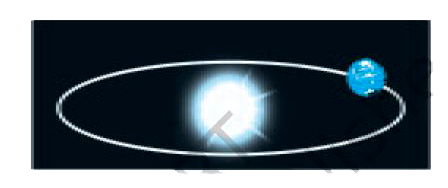.... is the distance that light can travel In a year.
Light year
Similar Questions
A light year is the distance that light can travel in one year.
1 light year =9,460,000,000,000 km.
a. Express one light year in scientific notation.
b. The average distance between Earth and Sun is 1.496×108 km. Is the distance between Earth and the Sun greater than, less than or equal to one light year?

View SolutionA light wave can travel
View Solution
Knowledge Check
A light wave can travel
Ain vacuumBin vacuum onlyCin a meterial mediumDin a meterial medium only.A light year (ly) is a unit of distance defined as the distance light travels in one year. Numerically, 1 ly= 9 500 000 000 000 km. How many metres are in a light year?
A9.5×1010mB9.5×1012mC9.5×1015mD9.5×1018mAssertion: Light year is the distance that light travels with velocity of 3×108ms−1 in one year.
Reason: Light year is the unit for measuring time.Aif both assertion and reason are true reason is the correct explanation of assertion.BIf both assertion and reason are true but reason is not the correct explanation fo assertion.CIf assertion is true but reaso is false.DIF both assertion and reason are false.
Assume (unrealistically ) that a TV station acts as a point source broadcasting isotropically at 1.0 MW. What is the intensity of the transmitted signal reaching proxima Centauri the star nearest our solar system 4.3 ly away ? A light -year (ly) is the distance light travels in one year .
View SolutionCan light travel in vacuum ?
View SolutionLight of wavelength 600nm is incident on an aperture of size 2mm. Calculate the distance light can travel before its spread is more than the size of aperture.
View SolutionAssertion: Light year is the distance that light travels with velocity of 3×108ms−1 in one year.
Reason: Light year is the unit for measuring time.
View SolutionLight of wavelength 600nm is incident on an aperture of size 2mm. Calculate the distance light can travel before its spread is more than the size of aperture.
View Solution
